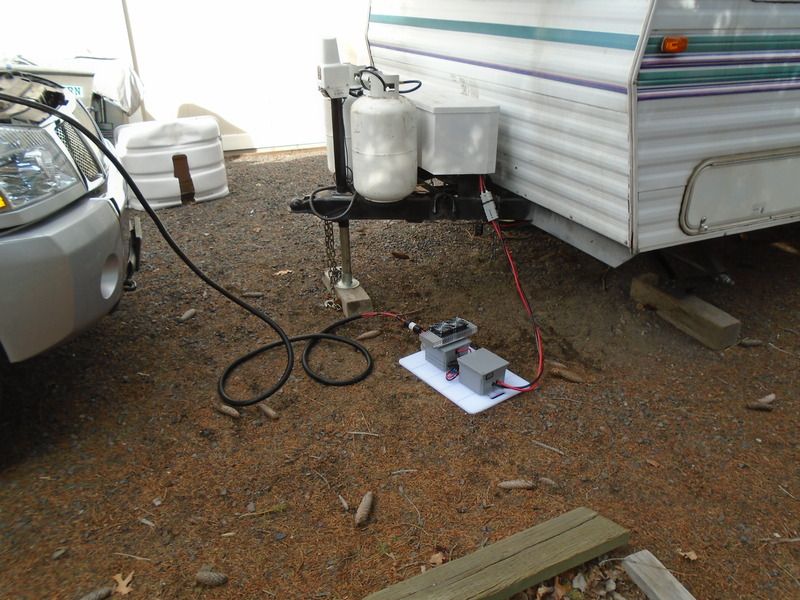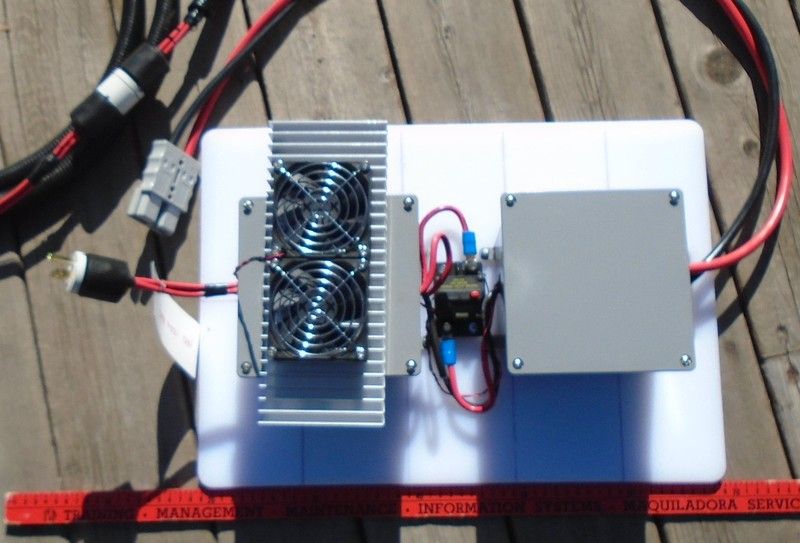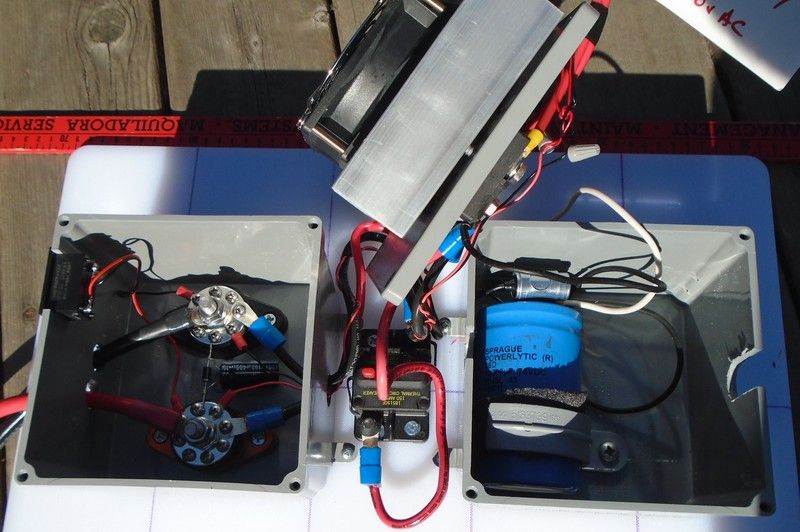Bend
Jul 03, 2016Explorer
Mex’s remote rectifier charger/genset – my version
Here is the history:
http://www.rv.net/forum/index.cfm/fuseaction/thread/tid/26303825/srt/pa/pging/1/page/1
http://www.rv.net/forum/index.cfm/fuseaction/thread/tid/28015670.cfm
And, here is my version after a year of planning and coaching from Mex:


Pic is 180 degrees from above.

The first test produced some screwy numbers. After some contemplation, evaluation, trouble shooting and laziness, I removed the automotive ignition capacitor due to a connectivity issue and checked all sub-circuits. Here are the results of yesterday’s test on a marine semi-deep cycle batt at ~80% SOC:
Individual stator to ground voltage at connector in engine compartment: 17.4v ac
Individual stator to ground voltage at the end of the 15 ft, 8ga, 3 wire extension cord to box: 17.1v ac
DC volts after conditioning at the box at engine idle (600 rpm): 14.3
DC volts after conditioning at box at engine 2K rpm: 14.3
Amps at batt within 3 min after start of charging: 26
Amps at batt after 30 min of charging: 21
Other observations/comments:
The heat sink never got above “almost” warm.
Confirmed batt amp absorption amount with a separate plug-in charger, set at 40 amps available, immediately after above test.
Seems like it is working! I have nothing to test max load available but will try soon with a lower SOC batt. Further results to follow.
http://www.rv.net/forum/index.cfm/fuseaction/thread/tid/26303825/srt/pa/pging/1/page/1
http://www.rv.net/forum/index.cfm/fuseaction/thread/tid/28015670.cfm
And, here is my version after a year of planning and coaching from Mex:


Pic is 180 degrees from above.

The first test produced some screwy numbers. After some contemplation, evaluation, trouble shooting and laziness, I removed the automotive ignition capacitor due to a connectivity issue and checked all sub-circuits. Here are the results of yesterday’s test on a marine semi-deep cycle batt at ~80% SOC:
Individual stator to ground voltage at connector in engine compartment: 17.4v ac
Individual stator to ground voltage at the end of the 15 ft, 8ga, 3 wire extension cord to box: 17.1v ac
DC volts after conditioning at the box at engine idle (600 rpm): 14.3
DC volts after conditioning at box at engine 2K rpm: 14.3
Amps at batt within 3 min after start of charging: 26
Amps at batt after 30 min of charging: 21
Other observations/comments:
The heat sink never got above “almost” warm.
Confirmed batt amp absorption amount with a separate plug-in charger, set at 40 amps available, immediately after above test.
Seems like it is working! I have nothing to test max load available but will try soon with a lower SOC batt. Further results to follow.
